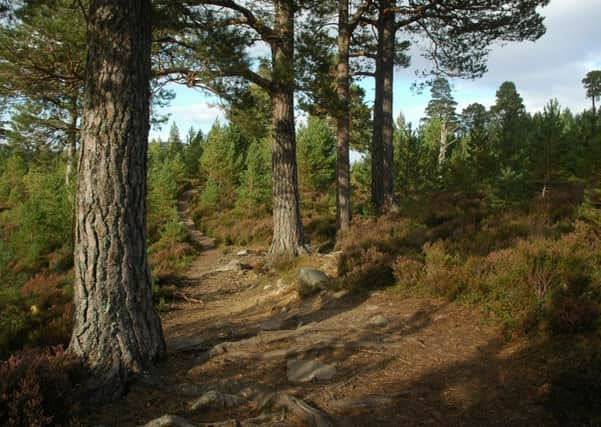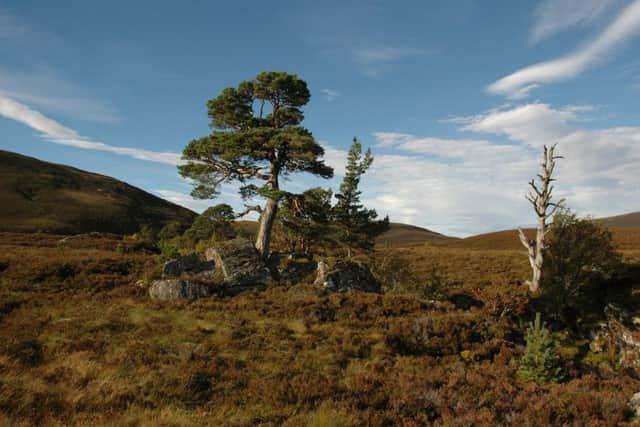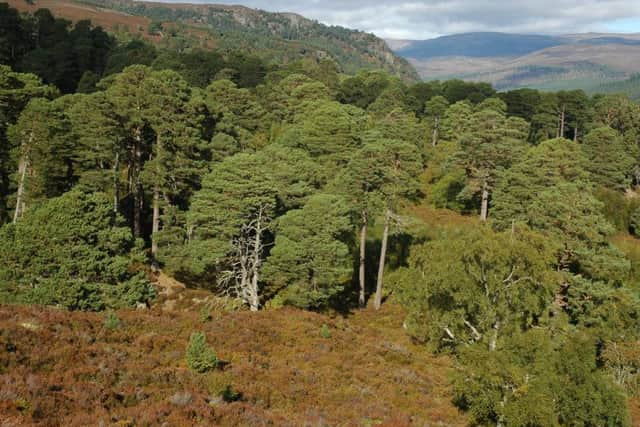The ancient pinewoods of Scotland resemble an ancient landscape


Having first studied Scotland’s ancient pinewoods in the late 1980s, it was a chance camping trip with friends, 20 years later to the remote Barisdale Glen that led to the idea for revisiting the woods. Using sabbatical leave and snatched weekends I made my way round the last 35 surviving pinewood remnants of the original Caledonian forests, scattered around the Scottish Highlands. In an age of climate change awareness these journeys were all done by walking, cycling and using public transport, adding a whole new dimension to the visits and often following in the footsteps of great literary figures such as Charles Dickens, Samuel Johnson and the Wordsworths.
I found that travelling to the woods provides not just an amazing wildlife spectacle but also an emotional connection to the past. Journeying around the woods it struck me that the great pleasure of coming across each site and the satisfaction from completing a tour of them all, was something to share. Through describing the woodlands and how to reach them I encourage readers to visit the sites themselves and to witness the next generation of trees begin their 300 year stand. I firmly believe that the more people enjoy, and share the passion for, this dramatic and awe-inspiring part of our natural heritage, the better chance we have of ensuring the right decisions from government and landowners to secure their future wildlife and natural splendour.
Advertisement
Hide AdIt is surprising how few people are aware of the ancient pinewood remnants, tucked away in the far corners of Scotland’s remote glens; survivors of woodland that cloaked much of the land several thousand years ago. They have not gone completely unnoticed however. Queen Victoria mentioned the splendid beauty of the ‘ancient fir woods’ in her Highland Journal and in present times, pine trees adorn tourist brochures as iconic images of Scotland.


The pinewoods offer an exhilarating experience whatever the time of year. In spring and summer the scent of pine combines with the sound of songbirds in the trees and buzzards ‘mewing’ overhead. Purple flowering heather in autumn surrounds the woods which are a colourful tapestry of green pine contrasting with the reds and yellows of alder, birch and rowan. In winter the pinewood becomes a Christmas card snow scene.
One of the most compelling features of the ancient pinewoods, compared to commercial plantations, is their great diversity of structure, with irregular spaced trees of all shapes and sizes reflecting the different soils, slopes and water levels. This rich mosaic of ground conditions is one of the consequences of Scotland’s climate and geology. On well-drained sandy soils, tight groups of naturally occurring, straight, tall trees can grow to 25 metres whereas on wet patches of boggy ground, stunted, twisted trees often grow no higher than two metres, even after a hundred years. Scots pines are able to survive in the thinnest of soils on rocky crags and steep riverside gorges, where their exposed roots and stems wind round boulders like the strong, wiry, limbs of a rock climber. All of this diversity contrasts with the timber plantations, where ground conditions are made more uniform by ploughing before the trees are planted.
Within Britain, the natural distribution of Scots pinewoods is restricted to the Scottish Highlands. Of the surviving ancient pinewoods, the southernmost is a sparse group of trees in Glen Falloch, near the north end of Loch Lomond. At the western edge of the Scots pines’ entire world range sits Shieldaig, near the Atlantic coast, beyond the remote Torridon mountains. The Deeside forests of Glen Tanar and Birse are at the eastern limit in Scotland and at the northern edge is Glen Einig in Sutherland, although small groups of pine to the south of Ben Hope may be the most northerly individual trees.
An essential characteristic of these ancient pinewoods is that the trees have naturally seeded and grown to maturity, repeating the cycle of life and death over thousands of years. Spectacular wildlife has found refuge in this diverse and mature habitat. Past changes in climate and human activity have taken their toll on the original tree cover. Most notable over the last 200 years has been the huge increase in managed herds of sheep and deer grazing on young trees. In some places the oldest trees are nearing the end of their life without a single sapling having survived to replace them.


Fortunately, dedicated effort has led to great improvements in the management and legal protection of the Caledonian pinewoods (as they are officially named under wildlife law) helping turn their fate around. This is one of the great success stories in nature conservation but there is still a challenge ahead in managing this vulnerable and important habitat.
Advertisement
Hide AdFor many people the ancient pinewoods convey the atmosphere of a primeval forest, but scientists and historians have cautioned against viewing these as untouched remnants. Even the most natural of woods in Scotland has had some human influence over thousands of years. Pinewoods are also dynamic, with the woodland boundaries slowly shifting across the landscape in waves of tree death and new growth on the margins. A few, but certainly not all, woods may well have moved several miles from their original location over the centuries. However, with the youngest sites at least several centuries old there is no doubt that, in the words of Steven and Carlisle’s milestone 1959 book The Native Pinewoods of Scotland: ‘to stand in them is to feel the past’.
• The Ancient Pinewoods of Scotland, a Companion Guide by Clifton Bain is published by Sandstone Press at £11.99 and is out now